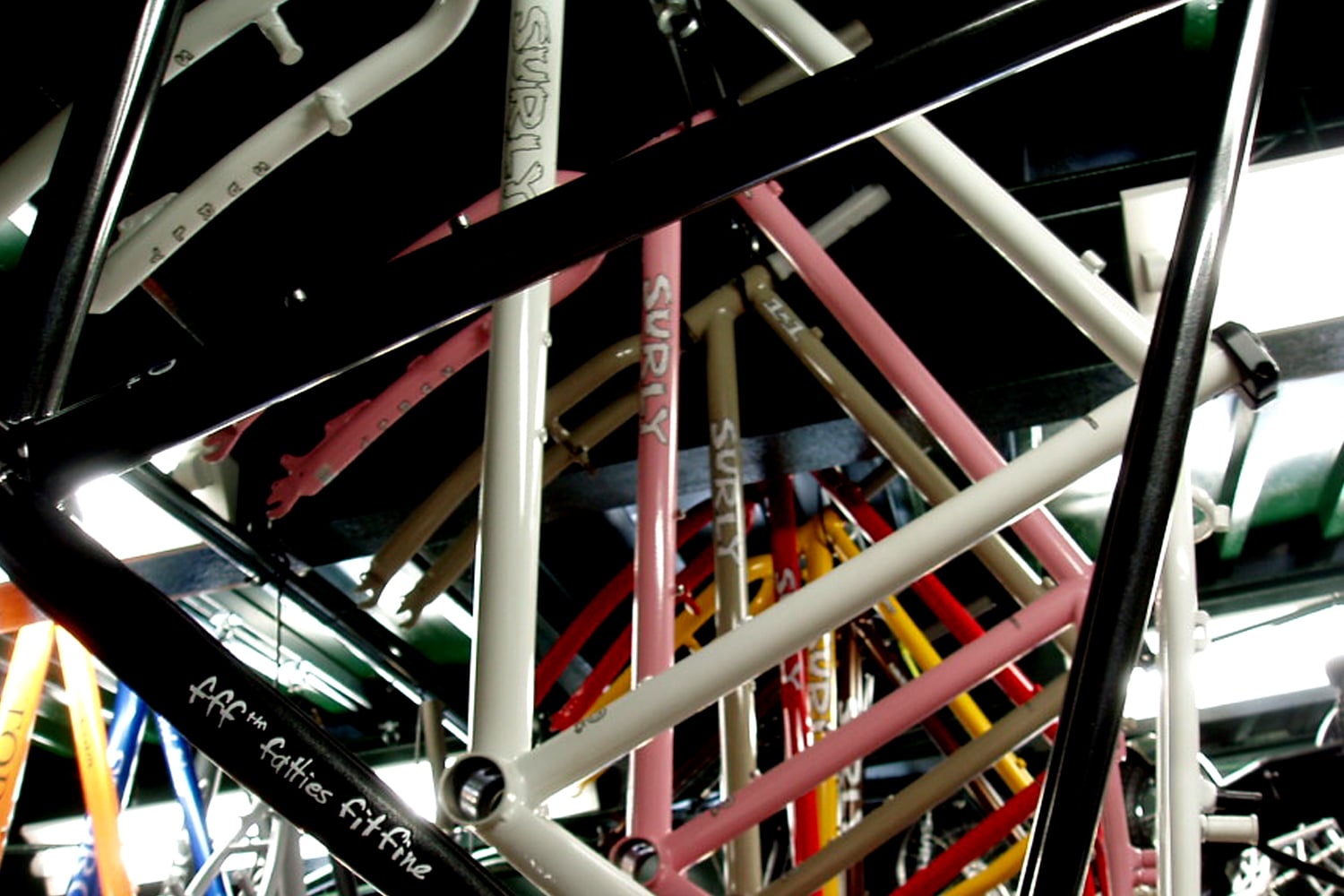There are many 135mm-spaced hubs available these days, and until recently all hubs of this spacing were considered rear hubs. But 'fat bikes' have captured popular attention and more manufacturers are offering fat bike hub, fork, and frame options and some are making forks and/or hubs that work somewhat differently, so there is beginning some confusion as to what works with what. When considering compatibility of your fork, hub and brake you of course need to match hub spacing to fork spacing (referred to as O.L.D., or Over Locknut Dimension), but there is more to consider. To make the disc rotor line up properly with the caliper, two things must happen:
1) In designing a disc hub, you must consider the distance from the rotor to the non-drive side locknut. This distance is more or less standardized, meaning if you buy a front hub from almost any hub manufacturer the rotor-to-locknut distance will be the same. The rotor-to-locknut distance on 'front' hubs is different than that of rears;
2) Similarly, the disc caliper mount on the frame or fork must be positioned in a specific way to properly line up with the rotor, and like the rotor-to-locknut standards, fronts and rears are of different design standards.
When we designed the Pugsley, we gave it 135mm hub spacing front and rear to allow the front and rear wheels to be swapped so that you could have extra gears available in case something happened, like if your freehub body seized in the middle of nowhere. Not everybody uses this function but for those riding in conditions extreme enough to wreck components it's pretty handy. Since at that time we didn't offer any front hubs spaced 135mm, it made sense to make the fork operate with a rear hub and rear brake. These days in addition to our plethora of 135mm rear hubs, we also offer a 135mm front hub which is actually designed like a rear hub but without any way to add cogs. And we offer three fat bike forks. Our stock Pugsley fork is spaced 135mm and is offset (one curvy leg). This fork requires the use of a rear hub and rear caliper adapter. Next, we offer a Pug fork in 100mm hub spacing which requires the use of a front caliper adapter and front hub. Easy enough. Not confused yet? One more. Our non-offset (no curvy leg) 135mm fork requires a hub designed with rear hub rotor-offset dimension and a front caliper adapter. Absorb that: the 135mm non-offset Pug fork needs a front caliper adapter but you need to use a rear hub.
Whew! If you finished reading that you have just earned an AA degree from a community college. Perhaps a quick recap is in order:
(1) Our offset fork requires a rear disc caliper adapter. Our non-offset forks each require the use of a front disc caliper adapter.
(2) Our 100mm Pug fork takes a standard front hub. Both our 135mm forks take rear hubs.
(3) We offer many obviously rear hubs (they accept gears) as well as a 135mm hub that looks like a front hub (you cannot put gears on it) but is actually a rear hub, with rotor-to-locknut dimension standard to rear hubs. Some companies make 135mm hubs that do not take gears and are designed with a front rotor-to-locknut distance. These will not work in our forks. Some companies make 135mm forks that take hubs designed with front rotor-to-locknut dimension. These will not work with our hubs.
 Surly Bikes
Surly Bikes